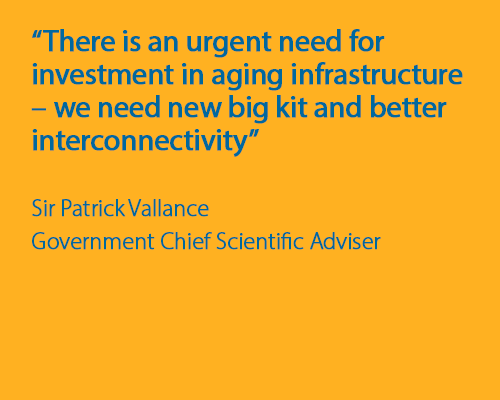The built environment is undergoing a dramatic change impacted by the fourth industrial revolution, climate change, resource scarcity, population changes and urbanisation.
Homes of the future will be embedded within smart sustainable buildings and structures, interconnected by sophisticated intelligent infrastructure systems designed to support environmental sustainability and the quality of life of users.
Future buildings will evolve from places of living and working to intelligent, efficient and sustainable environments that enhance human health and wellbeing.
The built environment will be connected, robust, secure, adaptable and constructed sustainably, and will have the needs of the user at its heart.
Sustainable - The built environment will be constructed, operated and maintained in a sustainable way.
Measurement will ensure the reduction of waste and the continual use and re-use of resources - also known as the circular economy.
Examples include: recycled and recyclable materials; energy and building management systems; local and renewable energy production, storage and use, upgrading and retrofitting.
Infrastructure - The building and civil engineering infrastructure will be reliable, efficient and robust to support changes in living, working and population migration.
Measurement will help increase efficiency, reliability and robustness of infrastructure, such as water, gas, electricity, transport and logistics.
Resilience - The entire built environment, homes, buildings, structures and infrastructures, will be resilient to climate change.
Measurement will enable buildings and structures to optimise their own operation or configuration and adapt to the external environment.
Examples include: floating homes, space or extra-terrestrial colonies, geoengineering projects, space-based geo-monitoring, indoor air quality monitoring and active control.
Digital - Homes will be connected and smart to allow integration of living, relaxation and other activities, and support the more vulnerable in society.
Measurement will support the increase in wireless and communication technology, assistive devices and the needs of individuals.
Examples include: robots to help the elderly live and work independently, technology for health assessment at home.
Metrology, or the science of measurement, is about more than the routine making of measurements, it’s about the infrastructure that ensures that we have confidence in the accuracy of the measurement or the adoption of technology. Foresighting has highlighted technological trends for metrology based on our vision for the built environment:

Discover our vision for the 2030s.
Find out more about Technology and Measurement Foresighting.
Our research and measurement solutions support innovation and product development. We work with companies to deliver business advantage and commercial success.
Contact our Customer Services team on +44 20 8943 7070